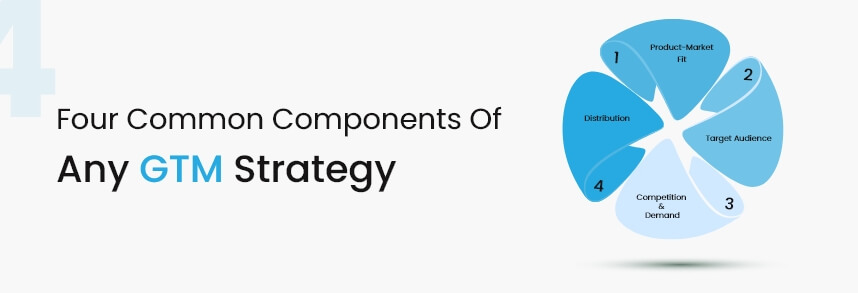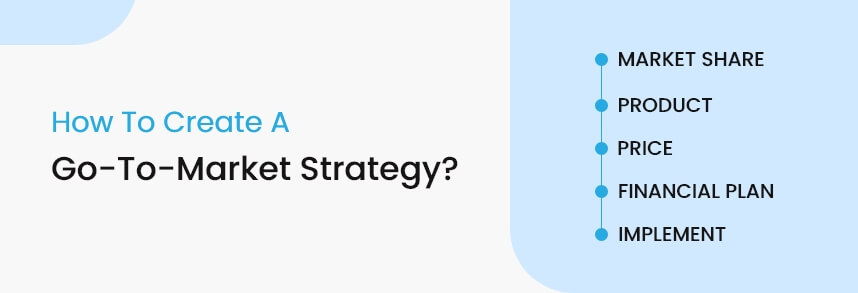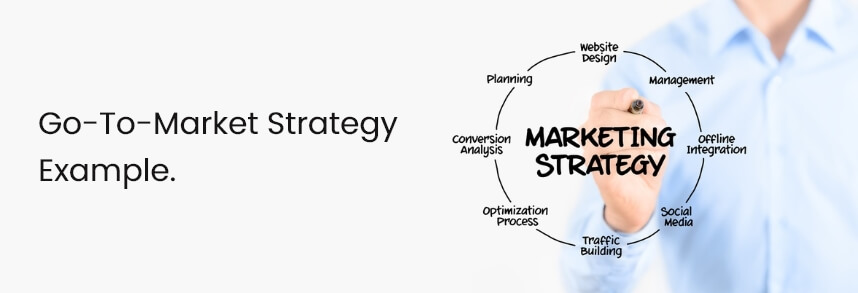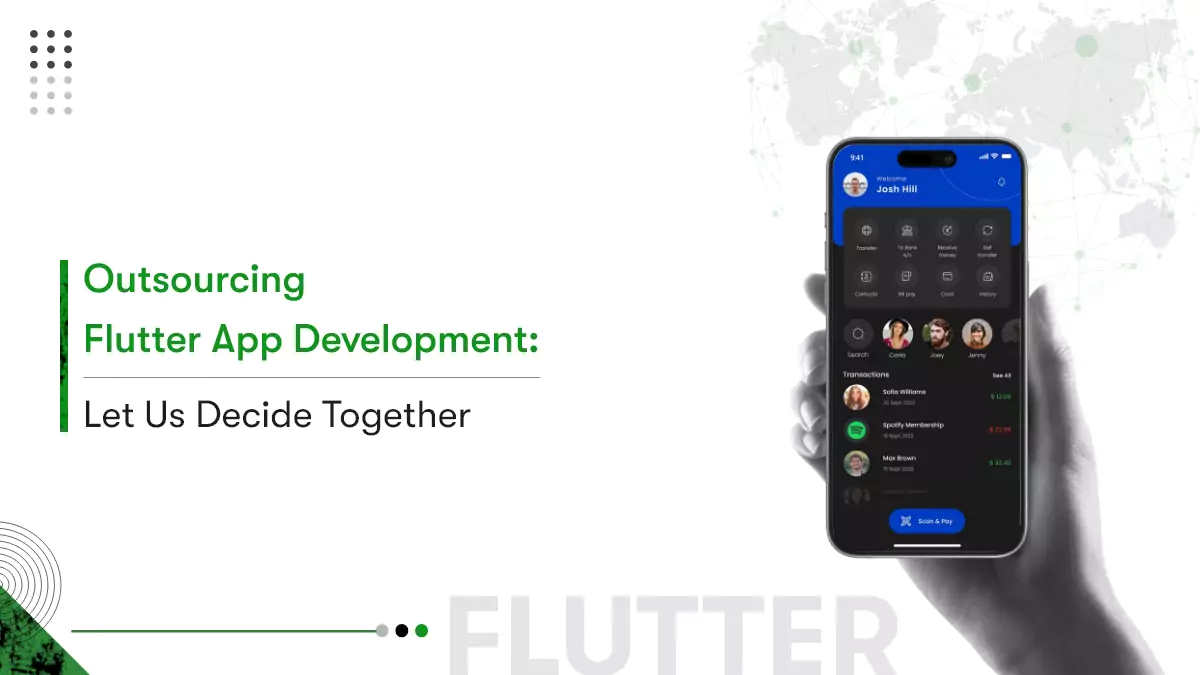To market a product or service is way more complicated than developing it. Isn’t it? Improving final products itself is dependent on responses you receive from the market on your product-market fit. Since product-market fit (PMF) hits the market first, it’s a must for startups. It’s a seed that you sow and grow.
Entrepreneurs achieve the PMF and start investing in sales and marketing to get a competitive advantage. However, new customers and revenue grow irregularly, often unbalanced with increasing the business’s sales and marketing expenses. The slow growth and increasing expenses make accelerators, investors, and founders anxious. And if the same scenario continues, the startup fails to create a buzz, fuzzing the product down the line.
The truth is the PMF cannot grow and win potential customers on its own. There is a gap between launching PMF and unlocking the growth, and a Go-to-market strategy fills that gap. A well-planned go-to-market strategy simplifies three crucial things for progress: sales strategy, a repeatable GTM playbook on finding and winning customers, and line everything with respective urgency.
However, despite significant effort, time, and money spent on product development, a poorly structured GTM strategy can also backfire.
Remember Apple in 1980 when Steve Jobs led a disaster flop before launching a game-changing iPhone: The Apple Lisa computer. Even though it had groundbreaking graphic technology of that time, only 10,000 units were sold. Lisa’s high price and misleading ads despite its low processing power were considered the failure reason.
In contrast, many say the Lisa computer itself and the product messaging was not appropriate for Apple’s prospective customers. It is said the release failure resulted in Jobs’s temporary exit from Apple. Apple and Steve Jobs recovered. However, smaller companies can lose a lot more when launching a product to market with a weak plan.
That’s why, with developing something new, start creating a customized go-to-market strategy that fits your budget and your buyer persona.

What is a Go-to-market strategy?
A go-to-market strategy is a critical element of any business plan. It is used by product managers, marketing strategists, and key decision-makers to streamline the product launch. It’s a business tool to use for:
- New products testing their target market for growth
- New products entering an existing market
- Existing products enrolling a new market
You can also use the GTM strategy for pivoting a startup business.
Technically, it’s a comprehensive action plan of how a new product/service would reach its prospective with every possible odd and end. Here’s a glimpse of areas you need to brainstorm on to build an insightful Go-to-market strategy.
- Possible acquisition and distribution channels and metrics to measure the success in each.
- Depending on the metrics, prioritize them from highest to lowest.
- Brief steps to achieve success in each channel.
- Figure out the money, resources, and time each channel may take.
- Distribute the responsibilities within the project team, defining the deadlines for the project.
Today, major go-to-market strategies for startups are more specific. Elaborating businesses narrow it to a scope, hyper-focused on just one single product.

Four common components of any GTM strategy
Product-market fit: What problem/s does your product solve?
Target audience: Who is facing the problem your product solves? How much can they afford to pay for a solution? What are the frustrations and pain points that you can lighten?
Competition and demand: Does anyone else offer the solution you’re launching? How does the demand draft look for the product, or is the market oversaturated?
Distribution: What are the mediums you will sell the product or service through? A third-party distributor, website, or app?
“A Go-to-market strategy should be comprehensive enough to be marketable, at the same time agile enough to update when you get customer feedback.”

How to create a Go-to-market strategy?
Step 1: The customers you want to reach first.
When you are starting, everyone may seem like a target audience. But that’s a delusion that you need to break. Different types of customers will value your product differently. You want to target those who value it the most. Focusing on a couple of buyer personas is good to go. As your startup grows, your personas will likely change.
Yet, starting with specific personas makes it easier to change your marketing plan, product features, and positioning with each new persona entry. Before you start planning your strategy, it’s vital to do some research and identify your buyer persona. If you are creating a Go-to-market strategy for a marketplace, you will need personas from each side. So, ensure each is concise, clear, and different from the others.
Step 2: Value matrix to create a definitive message.
After knowing your customers, it’s time to understand their problems and how your solution is valuable to solve them. The value matrix also includes the message, putting problem and solution together. You can practice a chart with each persona, listing their pain points and solutions your product provides, if any.
Now to create a compelling message, talk about the value you offer and the pain points you solve (or benefits you offer). For example, L’OREAL brand’s message is, “because you’re worth it,” it sparks the feeling of self-care in their customers and asks them to pamper themselves because they are special.
Step 3: Define the buyer’s journey.
The buyer journey is crucial to define before running any marketing strategy. Think of the buyers’ journey as a marketing funnel that narrows down the opportunities by each stage. It goes like this:
- Top of the funnel: Create brand awareness and the problem your product solves.
- Middle of the funnel: Educate the audience about how to choose the product.
- Bottom of the funnel: explain why your product is better, offer a quote, trial, consultation…
Step 4: Prioritize marketing channels.
By now, you have a specific audience to target, brand message, and buyer’s journey. The next thing you want to do is identify the proper acquisition channels to invest in.
Choose the right channel depending on:
- What channels do your customers use?
- What channels does your team excel in?
- What amount of money do you want to invest?
At first, map out all potential channels, then prioritize which one you believe is the most efficient. You can follow the “ICE” prioritization framework:
- Impact: How many customers will you acquire if this test is successful?
- Confidence: How confident are you about this test to be successful?
- Ease: How much money and time do you need for this test to be successful?
Here are some effective marketing channels:
- Search engine optimization (SEO).
- Paid Advertising
- Affiliate marketing & business development
- Community marketing
- Email marketing
- Social media marketing
- Content marketing
- Press
Before you start marketing through any channels, it’s essential to set and track success metrics. One of the effective ways to do so is by following an OKR—Objectives and Key Results technique. It’s a goal-setting methodology popularized by companies like Google and Intel.
With OKRs, you can keep your entire project marketing team on the same page, inspiring them to work hard. I would personally recommend creating OKRs as our team also follows the same.
Step 5: Retain and delight your customers.
When everything sets in place, start monitoring metrics and focus on maintaining customer relationships. Plus, it’s the right time to spread good word-of-mouth. Remember to create a go-to-market strategy framework that you can optimize based on conversion, traffic volume, and other KPIs.

Go-to-market strategy example.
Fitbit, an American consumer electronics and fitness tracker manufacturer, launched Smart Coach a few years ago. Smart Coach is a premium service and personal health coaching app that connects with users’ Fitbit trackers.
Their GTM strategy had simple objectives:
- Growing subscription revenue
- Creating brand awareness
- Boosting the subscription attach rate
The campaign encompassed paid and owned channels both to reach their audience who already possessed Fitbit wearable devices. Paid media were supposed to retarget display ads to lead potential customers to their landing page. Besides, they employ push notifications, social accounts, and newsletters to reach maximum prospects.
Consequently, Fitbit raked in an estimated $192 million in revenue through its GTM strategy.
Wrap up
Launching a new product in the market often feels like a do-or-die if you are shooting in the dark. By creating a clear and concise Go-to-market strategy for marketplaces, you grow your startup meaningfully. It helps you with targeting and achieving a realistic number of customers that value your solution. I hope the framework outline here appears helpful to you. At any stage, for any confusion, feel free to connect us!












 Contact Information
Contact Information